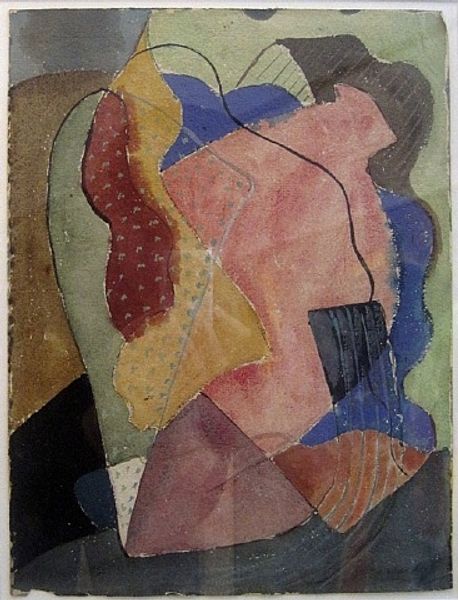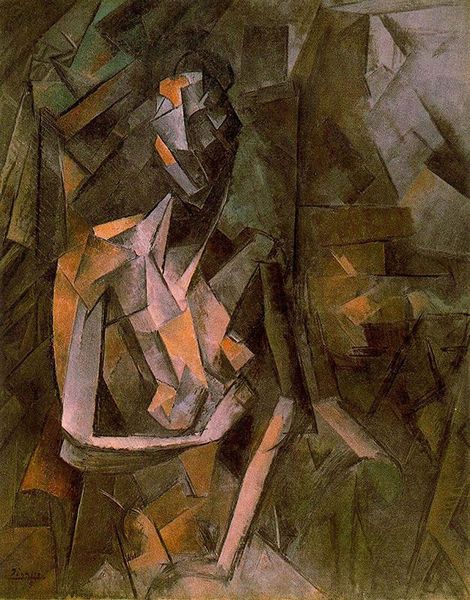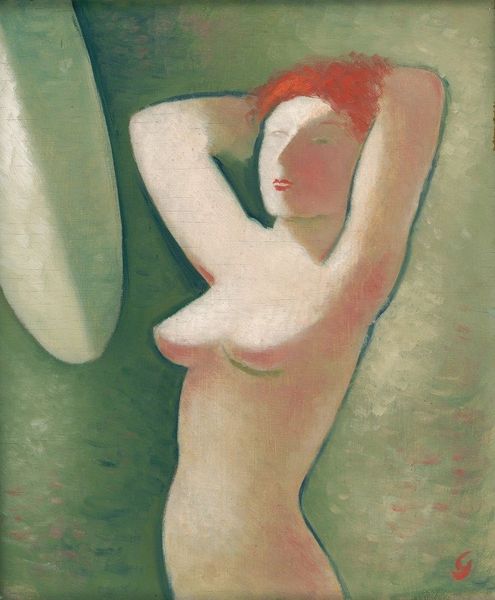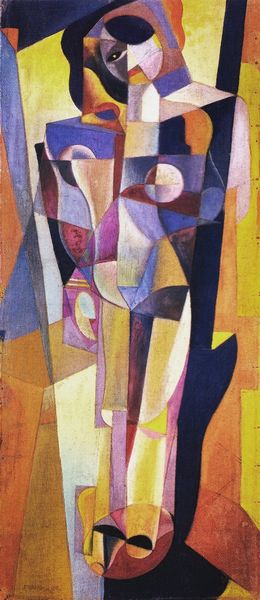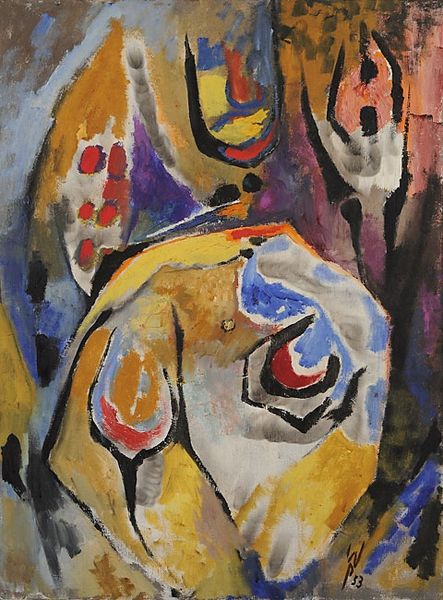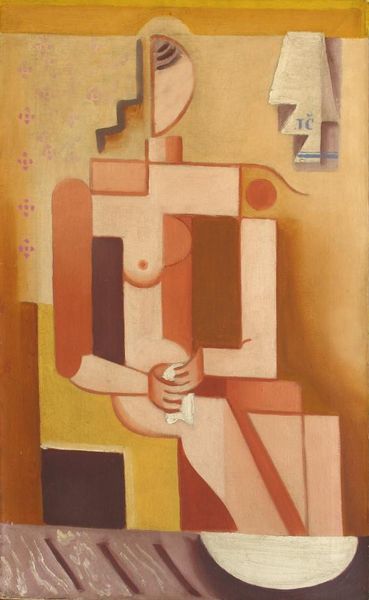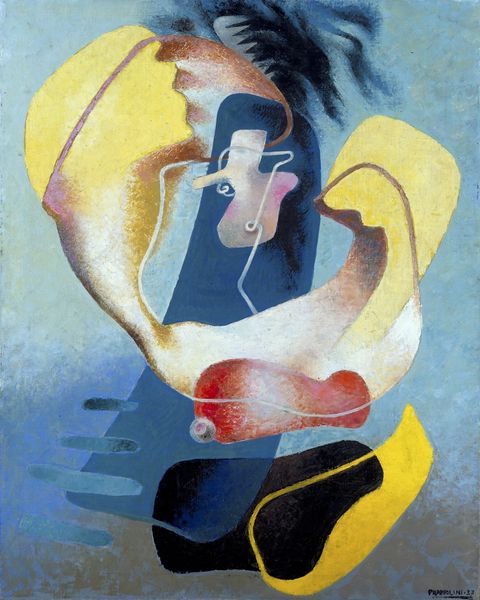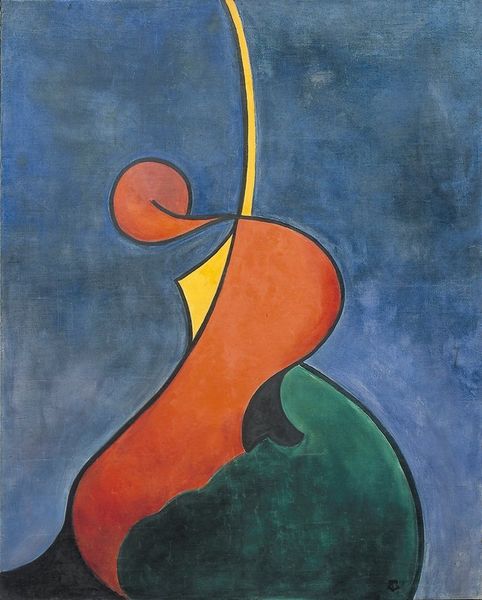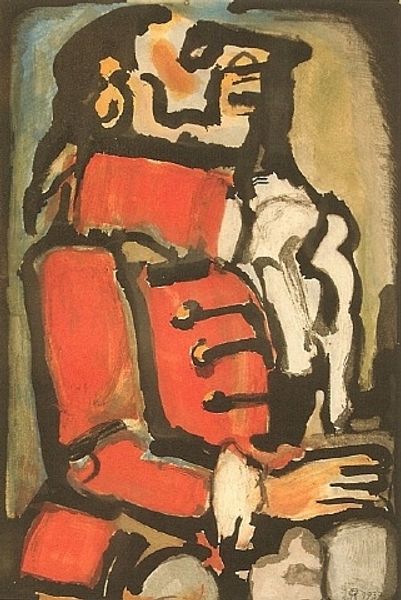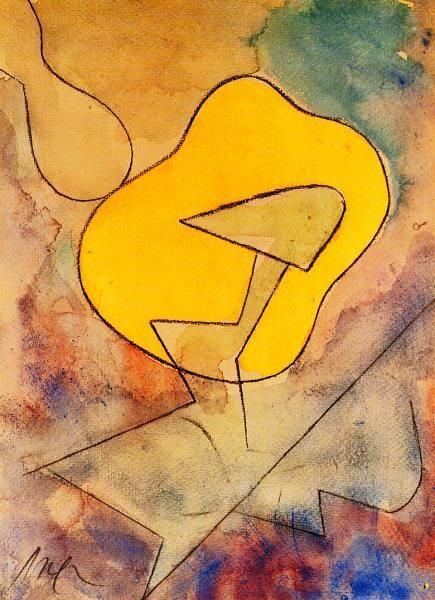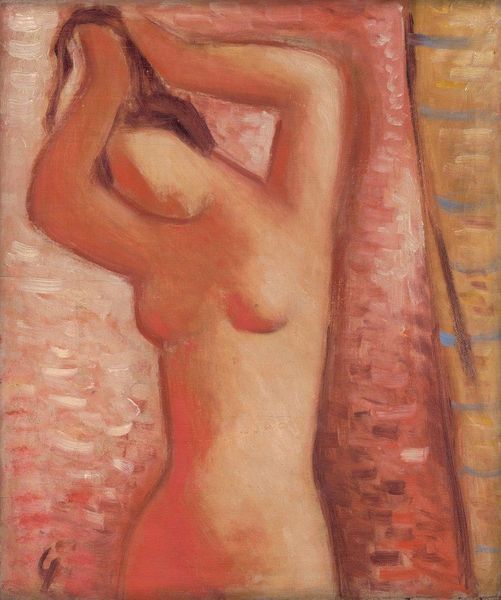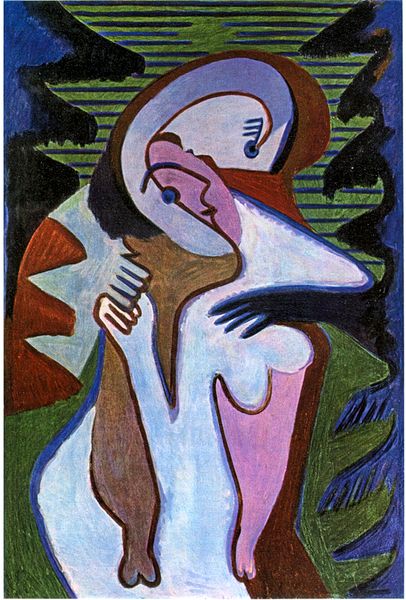
oil-paint
#
portrait
#
cubism
#
oil-paint
#
figuration
#
oil painting
#
abstraction
Copyright: Public domain
Editor: This is Morton Schamberg's "Figure A (Geometrical Patterns)" painted in 1913, rendered in oil paint. The use of geometric abstraction, particularly the way Schamberg uses varied colors to shape the human figure, I think, is quite intriguing, but I wonder, what do you see when you look at this painting? Curator: It's compelling to consider this piece within the burgeoning industrial landscape of the early 20th century. Schamberg uses oil here, a relatively accessible medium for the period. However, his choice to depict the human form in fragmented, geometric shapes—how does that connect, perhaps, with the growing mechanization and objectification of labor during this time? Editor: That's a really interesting point. I hadn’t considered the industrial link so directly. Do you think the limited palette and blocky application relate to the conditions artists and laborers found themselves in, materially speaking? Curator: Absolutely. The restricted color palette—primarily blues, oranges, and greens—might suggest resource limitations or a sense of drabness imposed by industrial work. The simplification into blocks mirrors, perhaps, the repetitive, dehumanizing actions demanded of factory workers, reducing individuals to components. Does this reflection influence your first impressions of the artwork? Editor: It definitely adds a layer. It goes beyond mere aesthetics to reveal the social and economic conditions shaping artistic expression and available supplies at that time. Thank you! Curator: My pleasure. Understanding the context of material production really unlocks the deeper resonances of Schamberg’s abstraction.
Comments
No comments
Be the first to comment and join the conversation on the ultimate creative platform.
